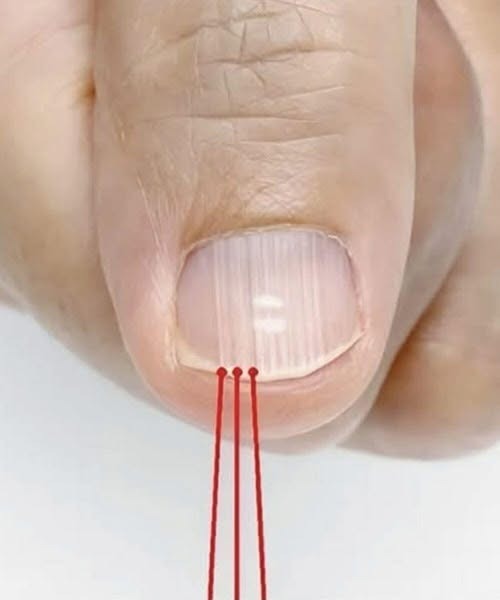As we grow older, our bodies experience many subtle changes, some visible and others less so. One often overlooked sign appears on our fingernails—vertical ridges that typically run from the cuticle to the nail’s tip. These lines, known as longitudinal striations, tend to become more noticeable after the age of 40.
For most people, these ridges are a normal part of aging and pose no health risk. They happen because the production of keratin, the protein that strengthens nails and hair, slows down over time. This reduction causes the nails to lose their smoothness, leading to those familiar ridges.
Additionally, as skin and nails dry out with age, ridges can become more visible. Daily habits like washing hands frequently, exposure to detergents, and cleaning products can make nails brittle and increase ridging.
Sometimes, however, more pronounced ridges can point to nutritional deficiencies. Older adults may not absorb key vitamins and minerals as well, including biotin (helps build keratin), iron (supports healthy cells), magnesium (promotes cell functions), and zinc (key for tissue repair). Lack of these nutrients can lead to weaker, thinner nails with more texture changes.
Although vertical ridges are mostly harmless, you should see a doctor if your nails show discoloration, pain, swelling, rapid texture changes, or abnormal thickening, as these could signal health issues like thyroid problems or infections.
To care for aging nails, keep them hydrated by drinking water and using moisturizers, eat a balanced diet rich in essential nutrients, wear gloves during chores to protect nails, trim gently, and avoid harsh chemicals like acetone nail polish removers. Some people might consider biotin supplements, but it’s best to talk to a healthcare provider first.
Ultimately, vertical ridges are usually nothing to worry about and can be managed with good care. Keeping an eye on your nails can also help you stay aware of your overall health and encourage better habits for strong, healthy nails at any age.


